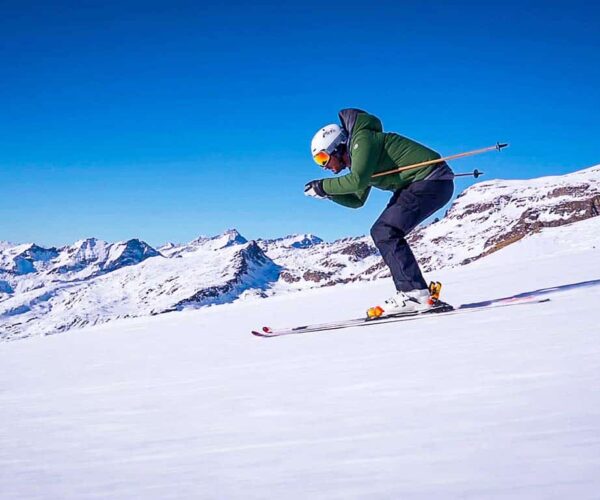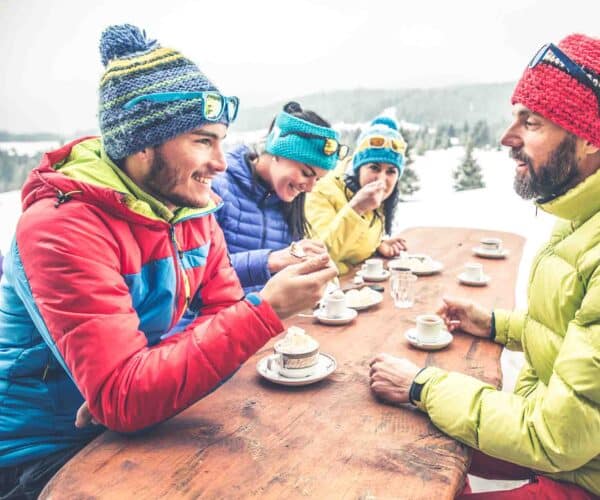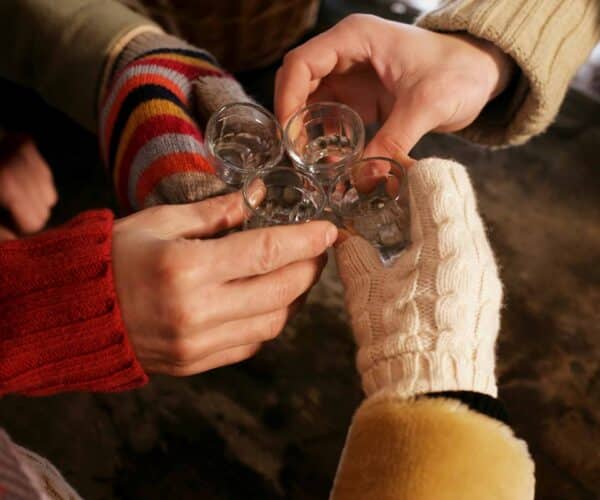Après-ski is an integral part of the skiing experience, offering a well-earned opportunity to unwind after a long day on the slopes. This time-honoured tradition and social highlight of any ski trip can range from a relaxed drink at a sunlit piste-side restaurant to lively celebrations with music, dancing on tables, and multiple drinks. While the allure of après-ski is undeniable, the revelry can carry risks that are often overlooked.
Skiing and alcohol have long been intertwined, but there is a growing awareness of the dangers of hitting the slopes after drinking. The thrill of skiing demands coordination, clear judgment, and fast reflexes—all of which are impaired by alcohol. What begins as a few drinks can quickly lead to a situation where the ability to navigate the mountain safely is compromised.
Many skiers assume that because laws around skiing under the influence are less stringent than those concerning drink-driving, the risks are lower. Yet statistics, real-life accidents, and even insurance policies suggest otherwise.
How does skiing speed compare to drink-driving laws?

The dangers of skiing under the influence become clearer when compared to drink-driving laws. In most countries, operating a vehicle with a blood alcohol concentration exceeding 0.05% or 0.08% is illegal due to the well-documented risks. Driving requires reaction speed, depth perception, and precise coordination—all skills also necessary for skiing.
While most people would never consider getting behind the wheel after drinking, many do not apply the same caution when it comes to skiing. The average skier can reach speeds of 30 to 60 km/h, comparable to cars traveling through urban areas. Strava data from February 2025 shows that certain ski runs, such as Ranfolly Red Run in Morzine/Les Gets, recorded average speeds of over 50 mph, while Copper Mountain in the USA saw skiers reaching nearly 40 mph. At these speeds, a loss of control or delayed reaction time can lead to severe accidents. The question then arises: if it is dangerous and illegal to drive under the influence, why should skiing be any different?
Are there laws against skiing while drunk?
Unlike driving, skiing regulations concerning alcohol consumption vary significantly by country. Some nations have stricter laws, while others take a more relaxed approach, relying on personal responsibility rather than legal enforcement. In Austria, for example, there is no set legal alcohol limit for skiers, but causing an accident while intoxicated can result in hefty fines. Switzerland and France have similarly ambiguous regulations, though in France, fines of up to €150 can be imposed for dangerous, drunken behaviour on the slopes.
Italy has taken a firmer stance, introducing a law in January 2022 that applies the same alcohol limits to skiers as to drivers, enforcing a 0.05% blood alcohol limit. Meanwhile, in the USA, some resorts take safety more seriously, with ski patrols actively removing intoxicated skiers from the slopes. Colorado’s Safety Act even allows for fines of up to $1,000 if a skier is found under the influence. Although enforcement varies, the increasing legal recognition of the dangers suggests that attitudes towards drinking and skiing may be shifting.
Snow depth is a critical factor in maintaining piste quality during the warmer months. Resorts with deep snow bases provide longer-lasting, well-covered slopes even as temperatures rise.
The effects of alcohol on skiing ability

Skiing requires precision, balance, and rapid decision-making. Alcohol compromises these skills in multiple ways. Reaction times slow down, making it more difficult to respond to unexpected obstacles or adjust to sudden changes in terrain. Depth perception becomes unreliable, leading to misjudgement of distances and difficulty maintaining balance. Perhaps most concerning is the tendency for alcohol to encourage risky behaviour, prompting skiers to attempt manoeuvres beyond their capability.
Medical professionals have consistently warned against the combination of alcohol and skiing. Dr. Gaëlle Lunardi, speaking to Mon Séjour en Montagne, described alcohol as a major risk factor on the slopes. She explained that intoxication not only reduces coordination but also affects how individuals perceive speed and distance, increasing the likelihood of collisions and falls. Hard-packed snow makes falls even more dangerous, often resulting in serious injuries such as broken bones or internal trauma.
According to Lunardi, spleen ruptures are among the most common consequences of ski accidents involving intoxicated individuals. The reality is that alcohol impairs judgment in all physical activities—whether driving, walking, or skiing.
Skiing with a hangover: A hidden risk
Even skiing the day after drinking presents risks that many do not consider. Alcohol remains in the bloodstream for hours, meaning reaction times and coordination can still be impaired the next morning.
A heavy night of drinking often results in dehydration and fatigue, both of which negatively affect performance. Headaches, dizziness, and reduced concentration make skiing far more hazardous. Some may assume that if they are no longer visibly intoxicated, they are safe to ski, but alcohol lingers in the system longer than many realise.
Increase risk of après-ski accidents

The risks associated with après-ski are not limited to skiing itself. Many injuries occur during the festivities that follow a day on the slopes. Slipping on icy staircases outside bars is common, as is tripping over ski boots while dancing in crowded venues. More tragically, falls from balconies in ski resorts have been reported far too often. The combination of high-altitude drinking, fatigue, and icy conditions creates a perfect storm for injuries.
The effects of alcohol are amplified at high altitudes, meaning skiers may become intoxicated faster than they would at sea level. The carefree atmosphere of après-ski often leads to overindulgence, with many failing to consider how their level of intoxication may affect their safety.
Adding to these increased risks are the potential financial consequences of medical costs. In 2024, Charlotte Barber learned this the hard way when she had her £75,000 insurance claim dismissed after suffering a severe injury during an après-ski sledging activity. After consuming a significant amount of alcohol, she embarked on a downhill route on a sledge, an activity that may have seemed like harmless fun at the time.
However, she broke her back in the accident, and when she sought compensation, her claim was denied. The ruling determined that a ‘sensible adult’ would be expected to recognise the risks of consuming large quantities of alcohol before engaging in an activity with inherent dangers. The case underscores how you may be refused cover for injuries if alcohol is involved, leaving individuals with significant medical expenses and no financial support.
When insurance doesn’t cover the consequences
One of the most overlooked aspects of skiing under the influence is the potential for insurance claims to be denied. Many travel insurance policies explicitly exclude alcohol-related injuries, meaning that if an accident occurs while intoxicated, medical expenses may not be covered.
Even more concerning, liability claims could be rejected if a skier under the influence causes an accident that injures another person. In serious cases requiring medical evacuation, repatriation costs alone can run into tens of thousands of pounds, leaving the individual fully responsible for the financial burden.
When it comes to cover its recommended that you take the approach to behave as if you were not insured and therefore minimise the likelihood of potential claims.
Making the choice to ski and drink responsibly
Après-ski is a cherished part of the skiing experience, and for many, it is a highlight of their trip. However, it is essential to balance enjoyment with responsibility. Being mindful of how alcohol affects the body, understanding the risks involved, and making informed decisions can help skiers avoid unnecessary accidents. While the decision to ski after drinking is ultimately a personal one, it is worth considering whether the momentary enjoyment of après-ski is worth the potential consequences.
Drinking responsibly, staying hydrated, and allowing time for alcohol to leave the system before skiing again can help reduce risks. If in doubt, taking a taxi or gondola down instead of skiing after drinking may be the safer option.
The mountains offer exhilaration, beauty, and adventure, but they also demand respect. By making informed choices, skiers can ensure that après-ski remains an enjoyable and safe part of their winter sports experience.
Specialist Ski Insurance from SportsCover Direct
When taking part in winter sports activities it is advised that you adhere to recommended safety precautions when it comes to behaving on the slopes, to avoid unnecessary accidents. However, there are times when things do go wrong, beyond your control and that’s where a skiing insurance policy can help you out.
SportsCover Direct offers a specialist skiing insurance policy to cover your travel requirements and specific ski scenarios. Our policy includes cover for medical emergencies, cancellations, personal liability, lost or damaged equipment, search and rescue operations, and even off-piste skiing, provided you follow local advice.
Find out more when you get a quote online.
This blog has been created as general information and should not be taken as advice. Make sure you have the correct level of insurance for your requirements and always review policy documentation.